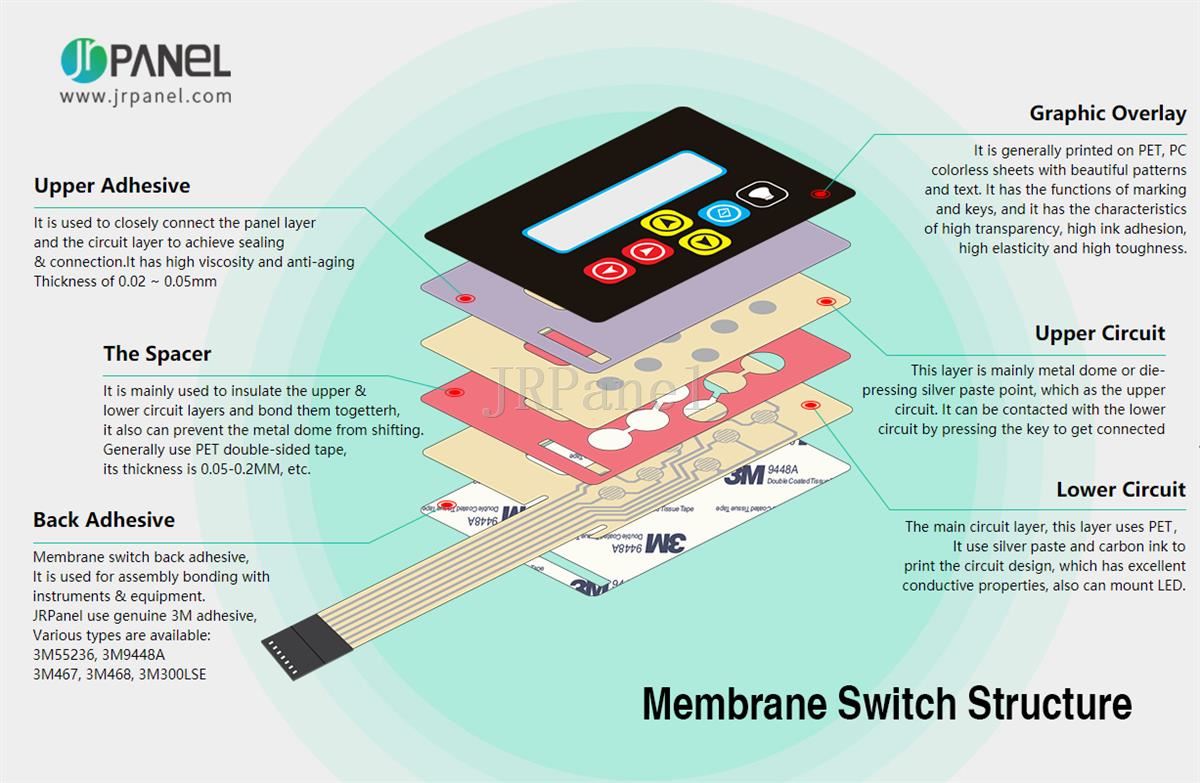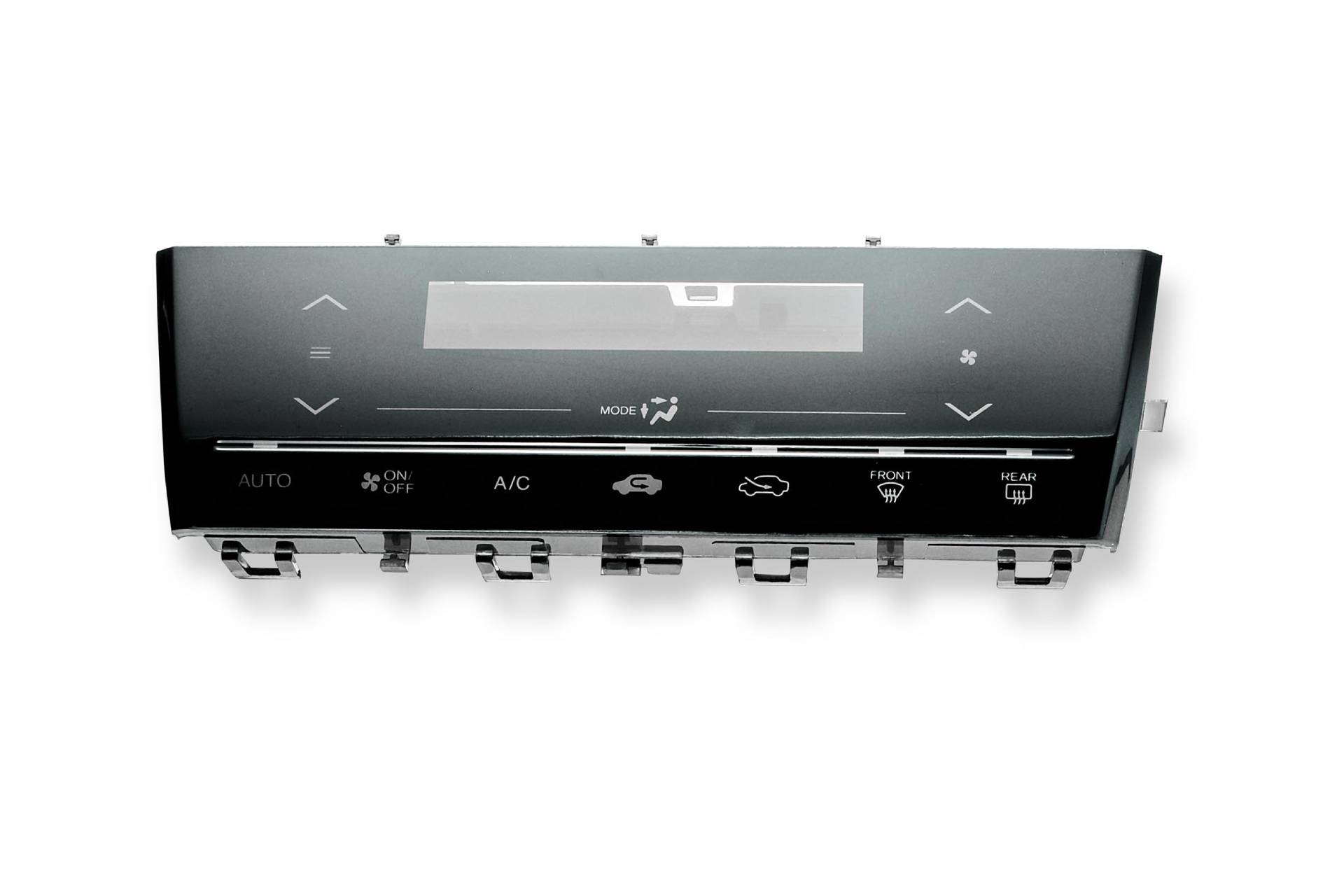How membrane switch enables sustainability in electronic product design
The Production Process Behind Membrane Layer Change: What You Required to Know
The manufacturing procedure behind membrane switches over combines careful layout, material selection, and quality assurance. It begins with understanding the details of membrane switch layout and proceeds with different phases, including material selections and printing methods. Each stage plays a vital duty in guaranteeing capability and toughness. The intricacies of layer building and construction and the rigorous testing criteria might reveal insights that are not promptly noticeable. What lies beyond these foundational aspects?
Recognizing Membrane Layer Switch Style
Although membrane layer buttons might appear easy initially glimpse, their layout involves elaborate factors to consider that ensure capability and durability. The design process begins with an extensive understanding of individual demands, including the interface's designated application and ecological aspects. Ergonomics is a crucial element, as the format has to promote simplicity of use while guaranteeing that tactile feedback fulfills customer expectations.Moreover, the layering of components, such as visuals overlays, glue layers, and conductive traces, must be precisely crafted. membrane switch. This split arrangement not just affects the switch's responsiveness but additionally influences its durability. Interest is provided to the sealing techniques used to secure versus wetness and dust, which can endanger performance. Additionally, layout considerations encompass aesthetic appeals, where color design and visual quality improve user experience. Inevitably, the style of membrane layer changes balances capability, individual experience, and resilience, ensuring that they satisfy the demands of numerous applications efficiently
Materials Utilized in Membrane Switch Over Manufacturing
When choosing materials for membrane button production, it is vital to ponder both performance and durability. The main materials include polyester and polycarbonate films, which give versatility and toughness. These films are usually coated with sticky to assure proper bonding to substratums. Conductive inks, generally made up of silver or carbon, are critical for producing electric connections within the switch, allowing for trusted operation.Additionally, a protective layer, such as a difficult layer, is frequently applied to improve scrape resistance and long life. The selection of backing material, such as acrylic or foam, can significantly impact the switch's responsive feeling and total user experience. Various environmental elements, including temperature and moisture, need to guide material selection to ensure peak performance in certain applications. Eventually, the ideal mix of materials adds to the membrane switch's functionality and lifespan, making informed choices vital for makers.
The Printing Refine: Creating Video and Text
The printing procedure in membrane layer button manufacturing plays a considerable function in producing premium graphics and message. Numerous visuals style methods are employed to guarantee aesthetic allure and performance, while mindful ink option approaches are crucial for longevity and efficiency. Comprehending these aspects is fundamental for achieving best cause membrane button layout.
Graphic Design Techniques
Graphic design strategies play a crucial function in the printing process of membrane layer switches, as they specify exactly how graphics and text will ultimately show up on the end product. Efficient visuals style involves the calculated use shades, font styles, and formats to boost readability and visual charm. Designers commonly utilize vector graphics for scalability, making certain that images stay sharp at numerous sizes. In addition, interest to comparison and alignment is crucial, as it influences individual communication and visual quality. The unification of branding components, such as logo designs, have to be handled with like maintain brand integrity. Generally, thoughtful graphic layout strategies contribute significantly to the capability and attractiveness of membrane buttons, influencing customer experience and product performance.
Ink Choice Techniques
Picking the ideal ink is vital for accomplishing the wanted aesthetic high quality and longevity in membrane switch production. Various ink types are used, including solvent-based, water-based, and UV-curable inks. Each type uses distinct characteristics, such as adhesion, resistance, and flexibility to ecological elements. Solvent-based inks are usually favored for their toughness and vibrant shades, while water-based inks are a lot more ecologically pleasant but may have restrictions in adhesion. UV-curable inks give quick curing and robust performance. Furthermore, shade matching methods ensure that the selected inks straighten with design specifications. Ultimately, the selection of ink need to think about elements such as application method, substratum compatibility, and end-use demands to achieve premium cause membrane layer switch graphics and message.
Layer Building And Construction and Assembly

Material Selection Process
A careful selection of products is vital in the manufacturing procedure of membrane layer buttons, as it straight affects capability and durability. The primary products used include polyester, polycarbonate, and various conductive inks. Polyester is typically favored for its outstanding resistance to chemicals and abrasion, making it suitable for harsh environments. Polycarbonate, on the other hand, offers remarkable clearness and effect resistance, which is useful for applications requiring visibility and robustness. Conductive inks, typically made up of silver or carbon, are crucial for producing trusted electric pathways. Additionally, the choice of glue products impacts the overall honesty of the button - membrane switch. Assessing elements such as environmental direct exposure, tactile feedback, and visual demands guides suppliers in choosing the best products for their particular applications
Layer Adhesion Strategies
Adhering layers in membrane button construction is an essential procedure that guarantees capability and longevity. Numerous attachment strategies are utilized to protect excellent bonding in between layers, which typically include making use of adhesives, warmth, and pressure. click reference Pressure-sensitive adhesives (PSAs) are commonly used for their ease of application and immediate bonding capacities. Furthermore, thermal bonding strategies can be applied, where warmth is used to turn on adhesive buildings, protecting a solid bond. The choice of attachment method mainly relies on the materials included and the specific application demands of the membrane layer switch. Appropriate placement and consistent application of adhesives are crucial to stop defects, protecting the button runs effectively throughout its designated life-span.
Quality Assurance Actions
Guaranteeing quality assurance throughout the layer construction and assembly of membrane buttons is crucial for maintaining performance and dependability. This process usually entails numerous crucial steps, consisting of complete inspections at each stage of production. Producers use innovative screening approaches, such as peel examinations and adhesion evaluations, to confirm the honesty of layer bonds. In addition, aesthetic evaluations are carried out to determine any type of problems in printing or material inconsistencies. Environmental conditions, such as temperature level and moisture, are meticulously checked to assure excellent healing and attachment. Additionally, routine calibration of devices helps maintain precise production criteria. By executing these quality assurance measures, suppliers can substantially decrease the risk of item failing, guaranteeing that the last membrane layer changes meet the called for specs and customer assumptions.
Testing and Quality Control Measures

Innovations in Membrane Layer Change Technology
As innovations in innovation continue to advance, membrane buttons are taking advantage of innovative advancements that enhance their functionality and customer experience. One significant innovation is the assimilation of capacitive touch technology, which permits more receptive and intuitive interface. This shift not just enhances aesthetic appeals but also minimizes mechanical wear and tear, extending the life-span of the switches.Additionally, developments in visuals overlay products have actually caused boosted sturdiness and resistance to ecological elements such as wetness and UV light. These products now use boosted clarity and illumination, more raising the visual appeal.Furthermore, the incorporation of wise modern technology is changing membrane switches right into interactive control panels, allowing connection with IoT devices. Visit Your URL This connection cultivates a seamless user experience, leading the way for applications in numerous industries, from healthcare to customer electronic devices. Collectively, these innovations position membrane layer changes as important parts in modern device design.
Often Asked Concerns
For how long Does the Membrane Layer Switch Over Production Refine Take?
The period of the membrane layer button production procedure can differ substantially. Factors such as complexity, products made use of, and manufacturing quantity impact timelines, with regular production varying from a couple of days to a number of weeks for completion.
What Are the Typical Applications for Membrane Buttons?
Membrane buttons are generally made use of in numerous industries, including automotive controls, household devices, clinical tools, and consumer electronics (membrane switch). Their flexibility and resilience make them optimal for applications requiring user-friendly user interfaces and trusted efficiency in diverse environments
Can Membrane Layer Switches Over Be Personalized for Particular Needs?

What Is the Life-span of a Typical Membrane Change?
The life expectancy of a normal membrane layer button differs, yet usually, it varies from 1 to 5 million cycles. Variables such as use, setting, and worldly top quality greatly affect durability and overall performance over time.

Are Membrane Switches Environmentally Pleasant?
The ecological friendliness of membrane layer switches over varies. Some materials made use of might not be recyclable, while others can be environment-friendly. The general impact depends on making methods and materials, requiring careful factor to consider during selection and disposal. The production process behind membrane switches over combines cautious design, product selection, and top quality control. It starts with understanding the details of membrane layer switch layout and proceeds with numerous phases, including product choices and printing strategies. When selecting products for membrane button manufacturing, it is essential to ponder both performance and longevity. A careful choice of materials is necessary in the manufacturing procedure of membrane buttons, as it straight influences capability and sturdiness. The selection of bond approach mostly depends on the products included and the particular application needs of the membrane switch.